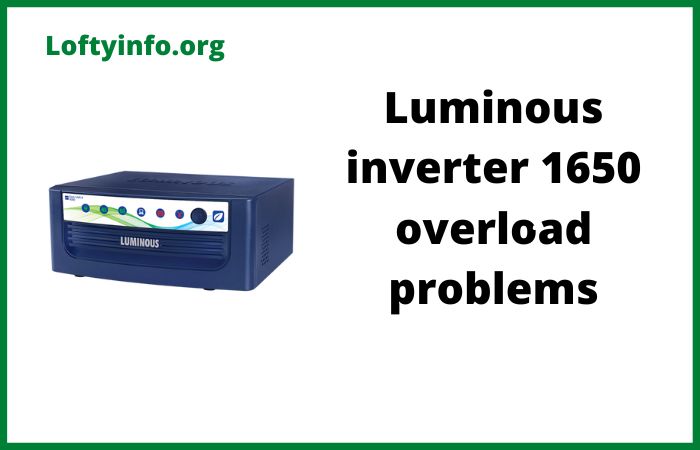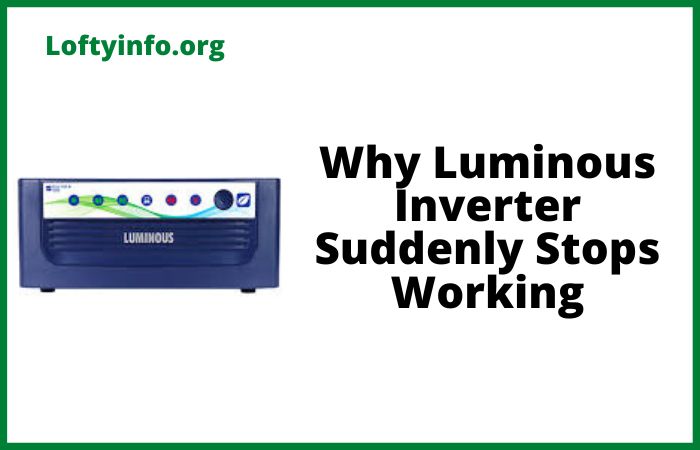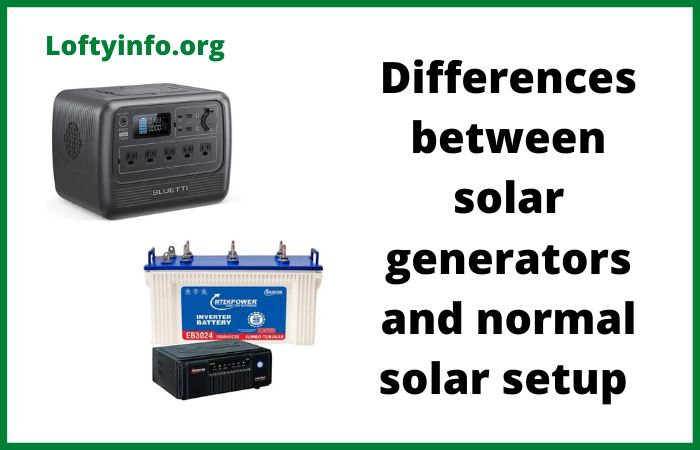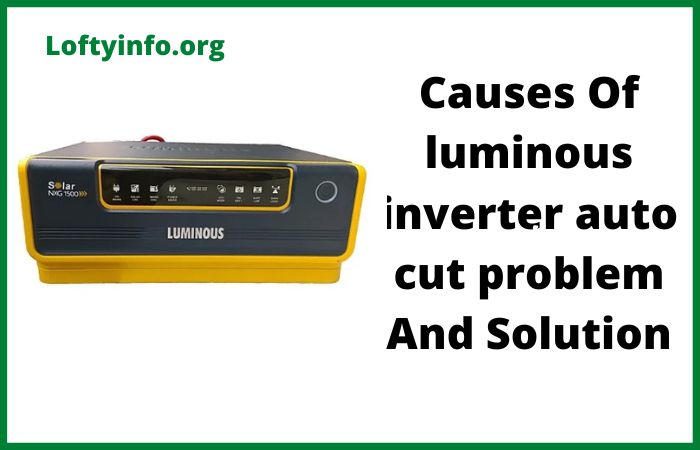Common Luminous Zelio 1100 Inverter Overload Problems With Solutions
The Luminous Zelio 1100 is a popular pure sine wave home inverter with a capacity of 900VA and rated power of 756W.
Despite its intelligent features including a 32-bit DSP processor and automatic overload protection, users frequently encounter overload problems that can disrupt power supply during critical moments.
Understanding these issues and their solutions is essential for maintaining uninterrupted backup power in your home.
The Zelio 1100 comes equipped with built-in overload protection that automatically shuts down the inverter when power demand exceeds its capacity.
While this feature prevents damage to the inverter and connected appliances, it can be frustrating when the system shows overload errors without apparent reason or shuts down during regular use.
This guide explores the most common overload problems faced by Luminous Zelio 1100 users and provides detailed troubleshooting steps to resolve each issue.
Common Luminous Zelio 1100 Inverter Overload Problems
1) Excessive Connected Load Beyond Inverter Capacity
The most straightforward cause of overload in the Zelio 1100 is connecting appliances that collectively draw more than 756 watts of power.
Many users underestimate the actual power consumption of their devices, especially when multiple appliances run simultaneously.
Refrigerators, water pumps, microwave ovens and air conditioners have high starting currents that can push the inverter beyond its limits even if their running power seems acceptable.
The problem becomes more complex when you consider that inductive loads like fans, refrigerators and washing machines require 2 to 3 times their rated power during startup.
For instance, a refrigerator rated at 200 watts might need 600 watts of surge power when the compressor kicks in.
If you have other appliances running simultaneously, this surge can easily overload the Zelio 1100.
To troubleshoot this issue, start by calculating the total wattage of all connected devices. Make a list of every appliance connected to the inverter and note its power consumption from the device label or user manual.
Add up these values and ensure the total stays well below 650 watts to provide a safety margin. Remember that operating the inverter at maximum capacity continuously reduces its efficiency and lifespan.
The solution involves careful load management and prioritization. Disconnect all appliances from the inverter immediately when an overload occurs. Wait for 5 to 10 minutes to allow the inverter to cool down completely.
Then reconnect devices one at a time, starting with the most essential ones. Avoid running high-power appliances like refrigerators, water pumps or kitchen appliances through the inverter.
If you regularly need more power, consider upgrading to a higher capacity inverter like the Zelio 1700 or installing a second inverter for non-critical loads.
2) Battery Related Issues Causing False Overload Warnings
The Zelio 1100 can display overload errors even when the connected load is within limits if the battery system fails to supply adequate power.
A weak, aging or improperly maintained battery forces the inverter to draw excessive current to meet the load requirements, triggering overload protection.
This problem is particularly common with batteries older than 3 years or those that have not been properly maintained with regular water top-ups.
Battery sulfation occurs when lead sulfate crystals build up on battery plates due to prolonged undercharging or deep discharge.
This condition reduces the battery’s ability to deliver current effectively, making the inverter work harder and potentially triggering overload conditions.
Corroded battery terminals increase resistance in the circuit, causing voltage drops that the inverter interprets as overload conditions.
To diagnose battery problems, first check the battery voltage using a multimeter while the inverter is running under load.
A healthy 12V battery should maintain voltage above 11.5V under load. If voltage drops below this level, the battery needs attention. Inspect the battery terminals for corrosion, which appears as a white or greenish powder around the connections.
Check the electrolyte level in each cell and ensure it covers the plates adequately.
The troubleshooting process involves several steps. Start by cleaning battery terminals thoroughly with a wire brush and applying petroleum jelly to prevent future corrosion.
Tighten all terminal connections firmly but avoid over-tightening. For flooded lead-acid batteries, top up each cell with distilled water to the recommended level marked on the battery.
If the battery is more than 4 years old or shows voltage below 10.5V even after full charging, replacement is necessary.
Perform an equalization charge by keeping the battery on charge for 12 to 15 hours continuously to remove sulfation and restore capacity.
3) Internal Wiring Faults and Connection Problems
Improper wiring or loose connections in the inverter system can create resistance in the circuit, causing voltage drops that lead to overload conditions.
This problem often manifests as intermittent overload warnings that appear randomly even when the load remains constant.
Shared neutral lines between mains supply and inverter output, incorrect phase matching or reverse polarity connections can all trigger false overload alarms.
The issue is compounded when DIY installation is attempted without following manufacturer guidelines.
Using undersized cables for battery connections creates resistance that reduces current flow efficiency.
Soose connections at the inverter terminals or changeover switch can cause arcing and intermittent contact that the inverter’s protection circuits interpret as overload situations.
In some cases, the inverter may detect feedback current from the mains circuit through improper wiring, showing overload even when no appliances are connected.
To identify wiring issues, start by visually inspecting all connections.
Switch off the mains supply and inverter before touching any wires.
Check that input and output cables are properly separated and not running parallel for long distances, as this can cause interference.
Verify that the cable gauge matches the manufacturer’s recommendations, which for the Zelio 1100 is typically 6 square mm for battery cables and 2.5 square mm for output wiring.
The solution requires systematic checking and correction of all connections. Ensure the live and neutral wires are correctly identified and connected according to the wiring diagram in the user manual.
The inverter output should feed into a dedicated changeover switch that cleanly separates mains and inverter supplies.
Tighten all terminal connections at the inverter, battery and distribution board. If the inverter shows overload without any connected load, disconnect the output completely and test the inverter.
If the error persists, the problem lies within the inverter itself and requires professional service. Replace any frayed or damaged cables immediately and ensure all connections are properly insulated.
4) Inverter Component Degradation and Internal Faults
Over time, internal components of the Zelio 1100 can degrade due to heat stress, voltage fluctuations or manufacturing defects.
Failed MOSFETs in the power circuit, damaged capacitors or faulty current sensing circuits can cause the inverter to incorrectly detect overload conditions.
These internal faults typically develop gradually, with the inverter initially showing occasional overload warnings that become more frequent over time.
Heat is a primary enemy of electronic components. If the inverter is installed in a location with poor ventilation, excessive heat builds up inside the enclosure, accelerating component aging.
The cooling fan inside the Zelio 1100 must operate properly to dissipate heat from power components. When the fan fails or becomes clogged with dust, internal temperatures rise dramatically, causing components to fail prematurely and protection circuits to trigger unnecessarily.
To check for internal faults, first ensure the inverter is installed in a well-ventilated area with at least 6 inches of clearance on all sides.
Listen for the cooling fan operation during heavy load periods. If the fan is not running or making unusual noises, it needs cleaning or replacement.
Check if the inverter body feels excessively hot during operation, which indicates poor heat dissipation or component failure.
Troubleshooting internal faults requires caution as opening the inverter voids warranty. If the unit is within warranty period, contact Luminous service center immediately.
For out-of-warranty units, professional technicians can test key components like MOSFETs, capacitors and current sensors using specialized equipment.
Clean dust accumulation inside the inverter using compressed air while being careful not to damage delicate components. Ensure the thermal paste on heat sinks has not dried up, as this compromises heat transfer.
If component replacement is needed, always use genuine Luminous spare parts to maintain reliability.
Reset the inverter by switching off mains power, disconnecting the battery, waiting 10 minutes and reconnecting everything to clear any stuck fault conditions.
5) Environmental Factors and Installation Location Issues
The operating environment significantly affects inverter performance and can trigger overload conditions indirectly.
High ambient temperatures reduce the inverter’s ability to dissipate heat, forcing it to operate below rated capacity to prevent thermal damage.
When room temperature exceeds 40 degrees Celsius, the Zelio 1100 may show overload at loads well below its rated capacity as its thermal protection activates.
Humidity and moisture can cause corrosion on circuit boards and connections, increasing resistance and triggering false overload warnings.
Installing the inverter in enclosed spaces like cupboards or directly against walls restricts airflow around the unit.
The heat generated during operation cannot escape effectively, causing internal temperatures to rise rapidly.
Mounting the inverter near heat sources like cooking appliances or in direct sunlight exposes it to additional thermal stress.
Dust accumulation on cooling vents blocks airflow and reduces heat dissipation efficiency, making the inverter more susceptible to overheating and overload shutdowns.
To diagnose environmental issues, measure the ambient temperature in the inverter installation area using a thermometer.
Check if the location receives direct sunlight at any time during the day. Inspect cooling vents for dust buildup or obstructions.
Verify that the inverter mounting position provides adequate clearance as specified in the installation manual, which recommends at least 150mm clearance on all sides.
The solution involves optimizing the installation environment for better inverter operation. Relocate the inverter to a cooler, well-ventilated area away from direct sunlight and heat sources.
Mount it on a wall rather than inside enclosed spaces to ensure unrestricted airflow. Clean dust from cooling vents regularly using a soft brush or compressed air. In particularly hot climates, consider installing a small fan near the inverter to improve air circulation.
During summer months when ambient temperatures are very high, reduce the connected load by 15 to 20 percent to prevent thermal overload.
Protect the inverter from moisture by ensuring the installation area remains dry and well-sealed against rain or water seepage. If condensation is a recurring problem, use silica gel packets near the inverter to absorb excess moisture.
6) Preventing Future Overload Problems
Preventing overload issues requires a proactive approach combining proper usage habits, regular maintenance and appropriate system sizing. Start by understanding your actual power requirements and ensuring they match the inverter capacity.
Create a priority list of appliances that must run during power cuts and avoid connecting non-essential high-power devices to the inverter.
Educate all household members about inverter capacity limitations and which appliances should not be used during backup power.
Implement a regular maintenance schedule that includes monthly checks of battery water levels, terminal connections and inverter displays.
Clean dust from the inverter and battery terminals every three months. Test the inverter under load periodically to ensure it responds correctly to overload conditions.
Monitor battery health by checking voltage levels and electrolyte condition, replacing batteries proactively before they fail completely.
Install a digital wattmeter at the inverter output to monitor real-time power consumption and identify which appliances draw excessive power. This awareness helps in making informed decisions about load management during power outages.
Consider upgrading to smart power strips that automatically shed less important loads when total consumption approaches inverter capacity limits.
Ensure proper installation by hiring certified Luminous technicians rather than attempting DIY setups. Correct wiring, adequate cable sizing and proper earthing are crucial for trouble-free operation.
Use the bypass switch feature of the Zelio 1100 to supply power directly from mains in case of persistent inverter faults, ensuring you are never completely without electricity.
Finally, keep the inverter firmware updated if updates are available from Luminous. Firmware updates often include improvements to protection algorithms and load management that can reduce false overload triggers.
Register your product with Luminous and maintain all warranty documentation for quick service access if professional intervention becomes necessary.
With proper care and attention, the Luminous Zelio 1100 can provide years of reliable backup power without recurring overload problems.
Why luminous 1250 inverter overload problems occur
Luminous inverter 650 overload problems with solutions
Causes of deye inverter problems
Top considerations when choosing the right battery size for your solar setup
Why is luminous inverter fan not stopping
Why luminous inverter shows overload without load
Common 3116 cat engine problems
Common 1586 international problems
The benefits of solar panels on homes
Common magnum inverter problems






